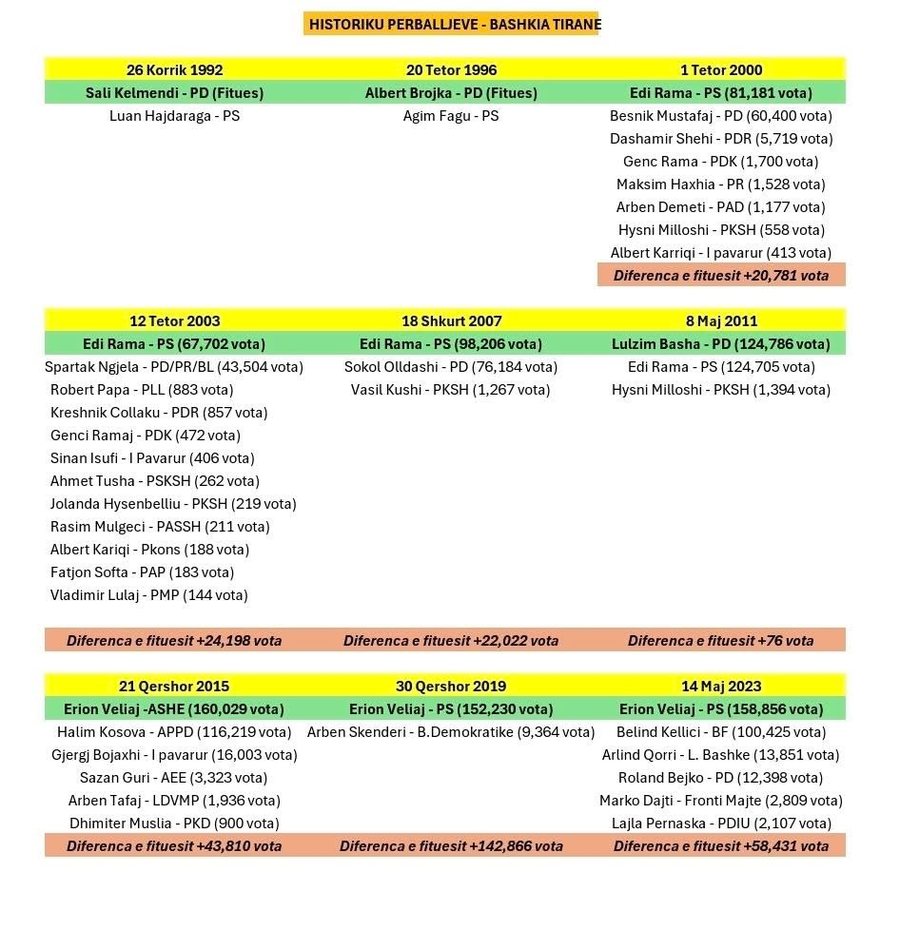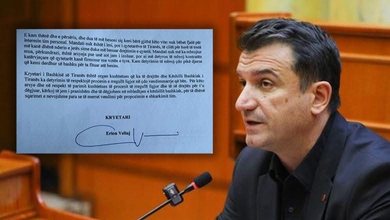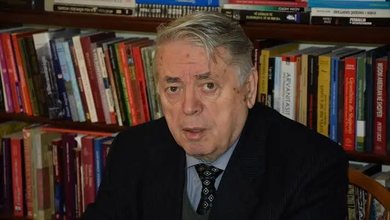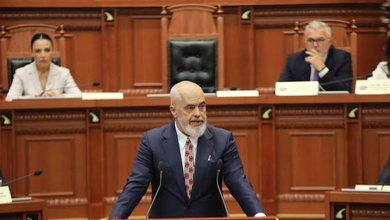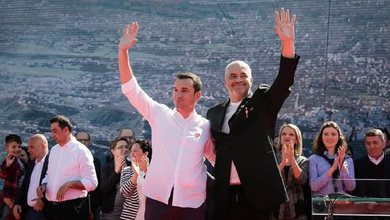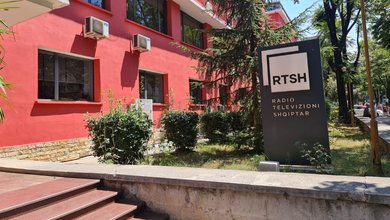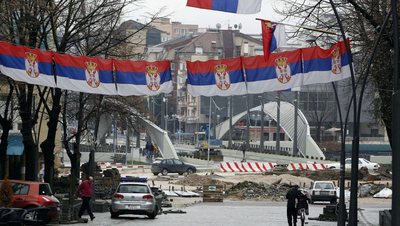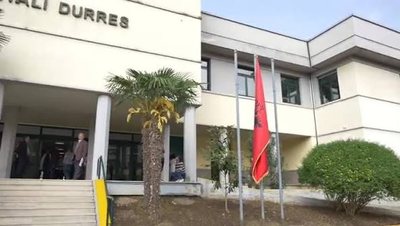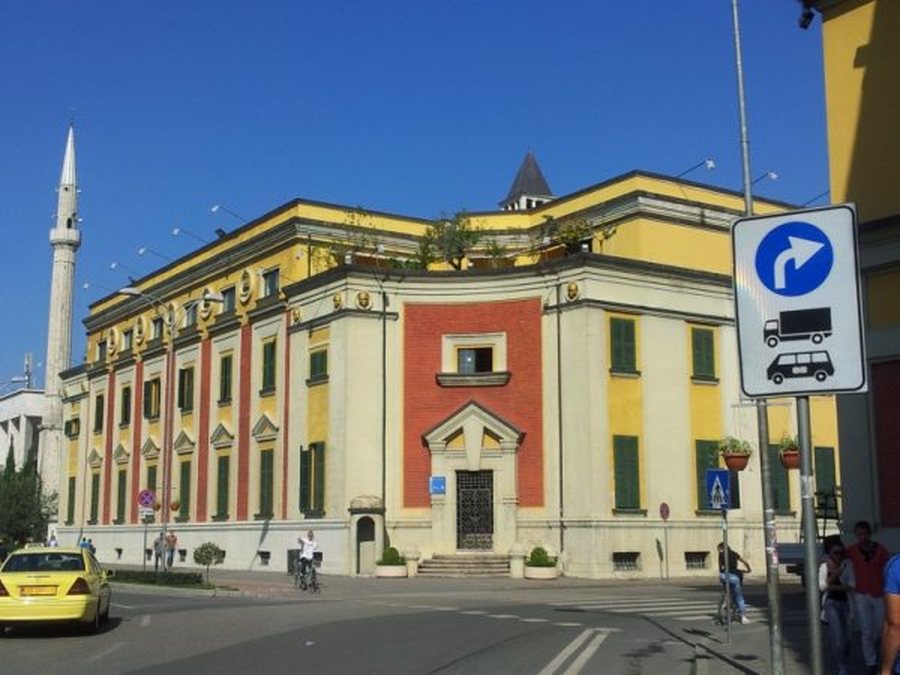
By Dardan Malaj
The history of the races for the leadership of the Municipality of Tirana is a good overview of the political transformations in Albania throughout the transition period. On the eve of the tenth battle, the data summarized in the chronological table allow us to identify some important trends.
1. A race with many actors – over 40 candidates on the capital's political scene
Although information about the first years of democracy is more fragmented, from 1992 to 2023 there are at least 44 candidates who have aspired to lead the Municipality of Tirana. This is an important indicator of the fact that Tirana has always been an attractive political terrain not only for the main parties, but also for independent figures or small parties. In many cases, the race for the capital has been perceived as a political springboard, or as a way to affirm small political alternatives before the urban electorate. However, Edi Rama remains the only one who made the springboard a reality by sitting in the Prime Minister's chair. Lulzim Basha who succeeded him remained a Prime Minister in the attempt. The only thing he won, the leadership of the opposition, he received as a gift from his 'political father'. In the attempt to 'assassine' the latter with premeditation, Lulzim Basha himself fell a political martyr, ending his career. Erion Veliaj, Rama's next successor in this position, an aspirant to occupy the Prime Minister's chair, ended up in prison awaiting trial.
2. Courage in the face of defeat – names who braved the most difficult moments
One element that stands out from the chronology is that some political figures competed in periods when their forces were at a clear disadvantage.
Luan Hajdaraga (SP, 1992) and Agim Fagu (SP, 1996) competed at the height of the Democratic Party's power, at a time when the rotation following the establishment of political pluralism had radically changed the balance.
Likewise, Besnik Mustafaj (2000) and Spartak Ngjela (2003) represented the opposition in difficult times for the DP. They ran when the SP had taken power, the right was trying to reorganize after the devastation of the 1997 riots, the assassination of MP Hajdari and the coup d'état in 1998, and further, the loss of the 2001 parliamentary elections.
Their entry into the race made the battle more a test of political endurance and dignity than a real chance of winning. Despite their defeat, these candidacies showed that Tirana remained a political arena where the courage to confront was worth more than the final result. Such candidates served as a symbol of democratic competition and the attempt to challenge the hegemony of the moment.
3. The right has a serious problem with Tirana
Only three of the nine battles for Tirana were won by the Democratic Party and its allies. Two of them in the early years of democracy, when the hegemony of the right was evident in the face of the left, destroyed in all senses, in an attempt to re-establish itself under the logo of the Socialist Party of Albania (SPSH) but part of the legacy of the Albanian People's Party (PLSH).
Although in power, the DP won its only subsequent race in 2011 in a highly controversial manner. Not only with the help of the absorption of the SMI into the coalition, breaking away from Edi Rama, but also with a controversial recount process of votes cast in the wrong boxes.
The figures show that the right has not recovered at any point, transforming Tirana into a 'forbidden apple'. Leaving aside 2019, where the official opposition boycotted the elections, consequently the difference in votes between the winner and the second place is meaningless, in other processes the victory of the left has always come from deepening the numerical advantage.
4. Increasing the number of votes – between population and territorial reform
Another clear feature is the evolution of the number of votes. From over 80 thousand votes that the winner received in the early 2000s, the figure goes to over 150 thousand in the 2019 elections and over 158 thousand in 2023. This change is explained by two main elements:
Demographic growth of Tirana. The capital has expanded at a rapid pace since the 1990s, attracting hundreds of thousands of residents from the districts. As a result, the electorate has also increased significantly.
The territorial reform of 2014. With the merger of administrative units and former communes around Tirana, the Municipality received a much larger territory and a significantly larger population. This explains why the differences in votes after 2015 are much higher than before.
This shows not only the new dimensions of the race, but also the strategic importance that the Municipality of Tirana has gained in the national political landscape – often as a “miniature” of the parliamentary elections.
In conclusion, the history of the Tirana mayoral race is a reflection of Albanian political pluralism, the individual courage of candidates in difficult times, and the demographic and institutional transformation of the capital. Tirana has never been a purely local race; it has always been a national battle in miniature.
